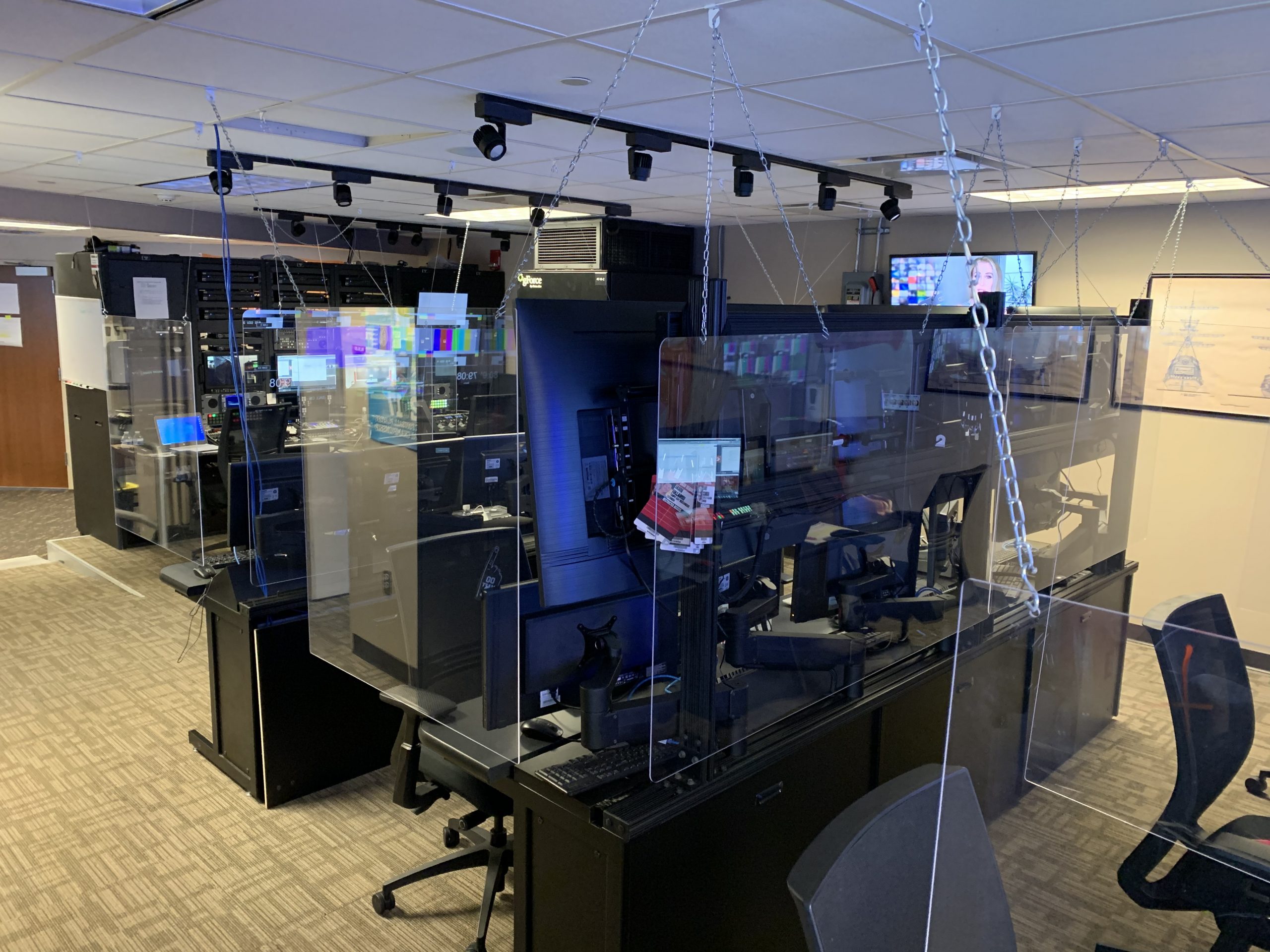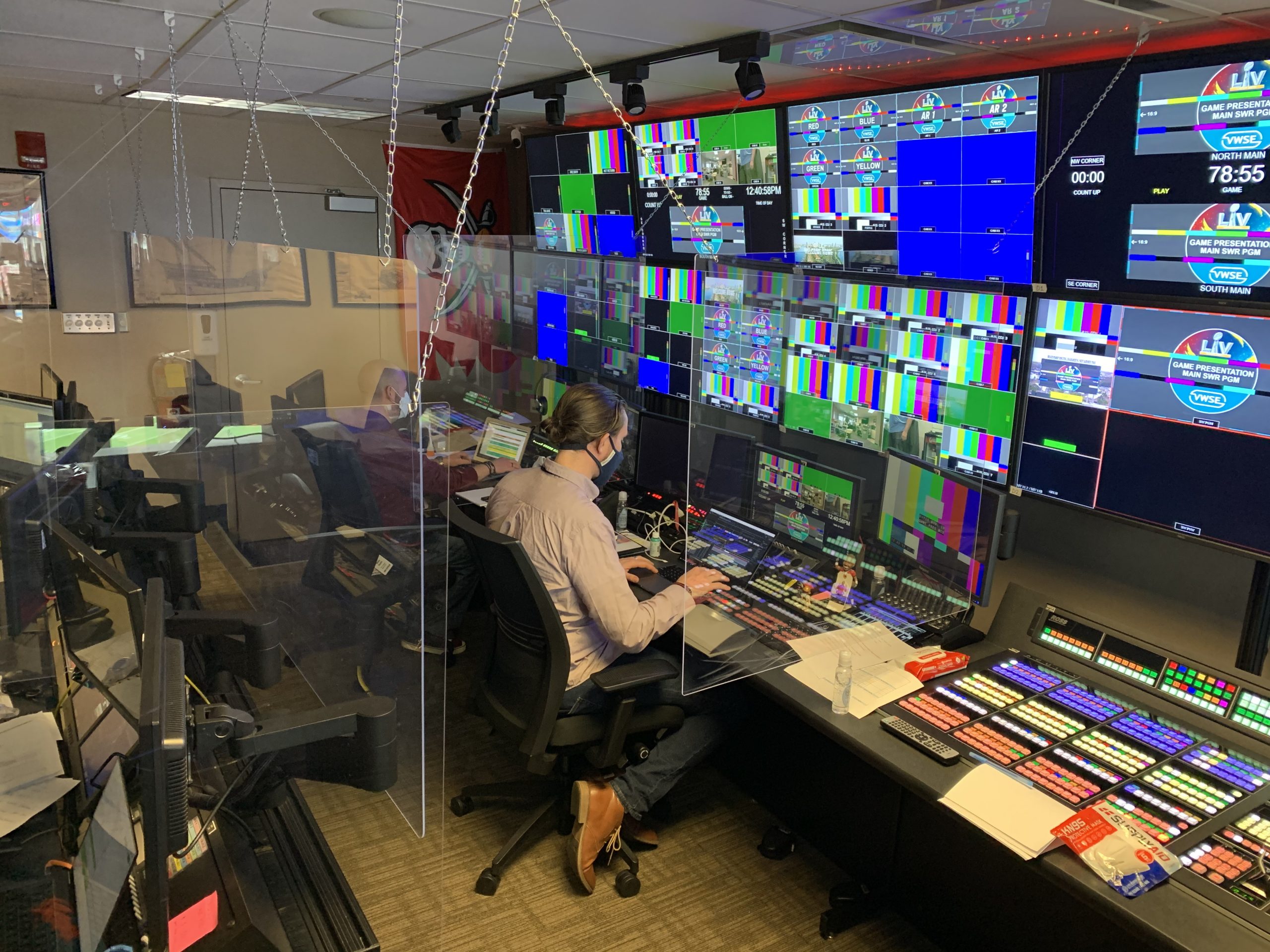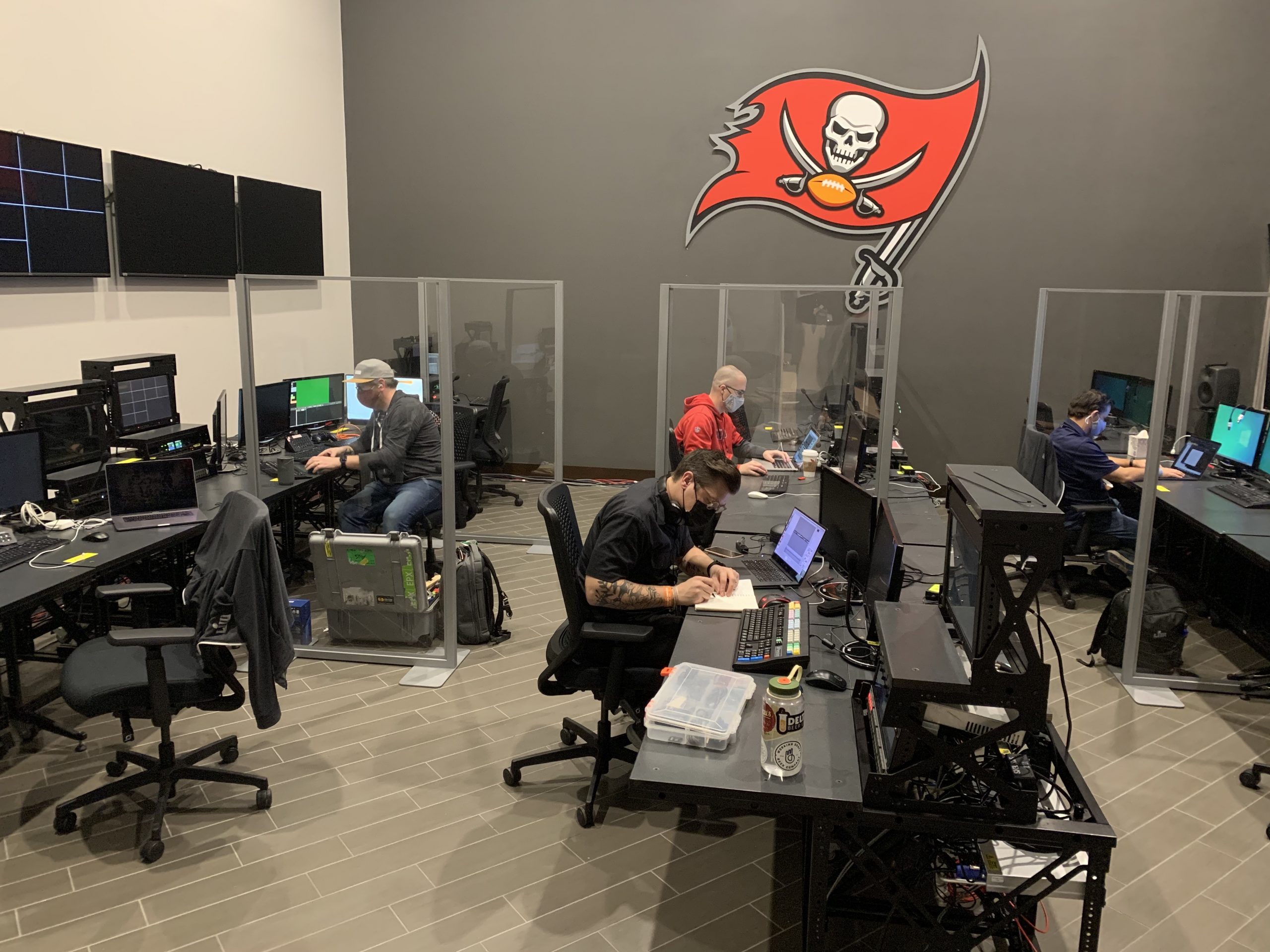Super Bowl LV: Van Wagner Deploys Remote Workflows, Teams Up With Buccaneers In-Venue Staff for Hybrid Show
Raymond James Stadium will be transformed to entertain fans in attendance, spectators watching at home
Story Highlights
A staple at the NFL’s biggest game of the year, Van Wagner Sports & Entertainment (VWSE) has become accustomed to different neutral-site locations hosting the Super Bowl. In yet another major event in the COVID-19 era, VWSE is using remote staffers, in-person help from the Tampa Bay Buccaneers staff, and LED technology to dazzle the 22,000 fans at Raymond James Stadium in Tampa, FL, and the millions watching from home.
“It will be a hybrid of our typical onsite workflow and BeBop Technology,” says Ryan Kehn, creative director, VWSE Productions. “We have our production server in Tampa that networks into the control room for content delivery, but we also have a workflow that goes from BeBop to Amazon S3 as an intermediary, and we’ll use some tools to sync S3 with our server in Tampa.”
Far From the Party: Remote Workflows Link Offsite Workers to Tampa
As the main conduit for the in-venue videoboard show and the overall game-day experience, VWSE is always poised to adapt and adjust to any given scenario. This year, with the COVID-19 pandemic still lingering as a serious threat, the company is pushing a chunk of resources to offsite locations. The objective is two-fold: alleviating congestion in common workspaces in the stadium and deploying a production method that has been routinely used since the beginning of last year.
“We looked at logistics and working in a COVID-safe environment and decided if it was really necessary to bring our full creative-support team that’s usually on-premises,” says Nate McCoart, director, technical operations, VWSE Productions. “We started to investigate different options, such as building a data center that our editors were remoting into or taking the entire workflow to the cloud.”
VWSE ultimately went with BeBop, a technology explored by the National Hot Rod Association at the beginning of the professional-sports shutdown and by NFL Media during production of the virtual NFL Draft. With any cloud-based deployment, there is a higher risk of connection failure or disruption for myriad reasons. To address such risks, Kehn and the onsite team devised a handful of backup plans.
“We’re being backed up in three places,” Kehn explains. “We’ve got our online block storage in BeBop that we’re editing from, S3 that’s syncing everything, and that’s being synced back down to the facility.”
Behind the technological structure, remote editors and producers will be working from their respective locations across the U.S. As a nationwide entity producing other high-profile events — College Football Playoff National Championship, US Open tennis, NCAA Men’s Basketball National Championship — VWSE has staffers located in New York, Minnesota, North Carolina, and California, as well as in Washington, DC, and even Tampa. The span of locations means that someone is working during all daytime hours. It also means that content deadlines needed to be shifted, but, aside from the time differences, the production teams are experiencing a fairly seamless connection.
“Even though they’re spread all the way across the country,” says McCoart, “the creative team feels like they’re in offices next door to each other. We’re relying heavily on Slack for communication across the board. That includes creative, production, and research teams.”
Mixed Messaging: 26 LED Screens To Transform Lower Bowl
Despite the magnitude of the event, Super Bowl LV at Raymond James Stadium will not be a sold-out event. As production teams have done throughout the NFL, the first 10 rows of the venue will be blocked off from public access. During the regular season, teams displayed sponsorships, messages to fans, or encouragement to medical workers on the front lines.

Separate workstations have been constructed to allow for ample social distancing between onsite staffers.
Led by NFL Director, Event Presentation and Content, Tim Tubito, and NFL production team is installing 26 physical LED screens over these sections for additional output of video content. This new 360-degree deployment will have its own dedicated team and XPression Tessera system but can also seamlessly tie back into the existing LED interface.
“Each one of these sections will have discrete XPression output, so we can control what’s going to any screen at any time,” says McCoart. “It only made sense to overlay [the lower-bowl LEDs] on top [of the system controlling the main videoboards]. We can control the whole environment with one button push for some of those full-venue takeovers.”
Kehn and his team are planning to use bits and pieces of the system for different messaging near the sidelines and on the main displays for sponsorship and league purposes. During stoppages of play, the system will be unified for dramatic presentations to honor frontline heroes or celebrate touchdowns and big plays.
Safety in Mind: Onsite Crews Spread Out in Three Control Rooms
Much of the production will be handled remotely, but, for crew members onsite, the setup will be unlike any deployed for a Super Bowl. In collaboration with the Tampa Bay Buccaneers’ production team — including Venue Technology Manager Dan Roy, Senior Producer Mike Dewsnap, and Content Manager Greg Mays — VWSE has changed multiple interior sections of the stadium into production hubs for the socially distant crews.
“We would have brought in 50 additional people on top of the Bucs crew,” says EVP, Productions, Bob Becker. “If it was a normal year, we might have had only one sub-control room instead of three.”
In the venue’s existing control room, Becker, PA Announcer Alan Roach, Kehn, and other crew members will handle the bulk of the game-day production. This main control room features a Ross Video backbone, including an Acuity switcher and several XPression Studio engines for insert graphics.
In the second control room, near the club level, a team will control all main, corner, and lower-bowl LED activations through Ross Video’s XPression Tessera and DashBoard control system to sync all elements together. This room will also facilitate replay analysis through PIERO Broadcast and virtual down and distance lines through PIERO Live. Other operators will be producing augmented-reality graphics like scoring drives and other Next Gen Stats via Ross Video’s Voyager graphics platform (powered by Epic Games’ Unreal renderer platform), ACID cameras, Furio robotic camera heads, and LUCID Studio control system.
The third control room will offer ancillary support to the show.
Split Down the Middle: A Neutral Production Even in the Bucs’ House
The sports-media landscape is eating up the fact that the Buccaneers are the first team to play the Super Bowl in their home stadium. It’s a storyline worth mentioning elsewhere, but, for an in-venue crew handling a neutral production, the teams playing on the field are irrelevant.
“There will be no competitive advantage from a game-presentation standpoint,” says Becker. “It is a neutral-site game, so whatever the Bucs have, the Chiefs will have. It will be split right down the middle, so the only difference is that it’s being played in Raymond James Stadium.”
Although the ultimate game of the season comes with a tantalizing matchup on the field, Van Wagner’s main concern is getting through the event safely and doing it in such a way that every worker feels as comfortable as possible.
“The overarching priority across the board is keeping everyone safe,” adds McCoart. “Our Operations and Logistics Manager Danielle Turner has done the hard work of overseeing the various different pieces relating to COVID-19. From testing and coordinating flights to hotel adjustments and other last-minute changes, she has done a lot for us.”
Check out all of SVG’s Super Bowl LV coverage:
- CBS Sports Production Team Puts Finishing Touches on Innovations
- Strong Onsite Set Presence Supports CBS Sports’ Studio, Pregame Programming
- NFL Media Leans on Culver City HQ for Week-Long Extravaganza in Tampa
- ESPN Brings REMI Philosophy to Big Game
- NFL Films Ready To Deliver Big Game Around the Globe Despite Pandemic Challenges
- Kansas City Chiefs’ Digital Team Hurdles COVID-19 Obstacles in Team’s Return to the Big Game
- Tampa Bay Buccaneers Digital Team ‘Raises the Flags’ Ahead of First-Ever Home Championship Game
- Van Wagner Deploys Remote Workflows, Teams Up With Buccaneers In-Venue Staff for Hybrid Show
- M3 Eclipse Truck Is Dedicated to Music for Halftime Show
- Facing the Challenges of Bringing the Behemoth That Is NFL to European Markets


